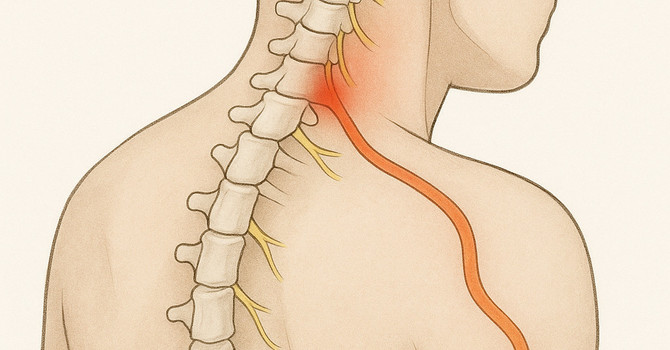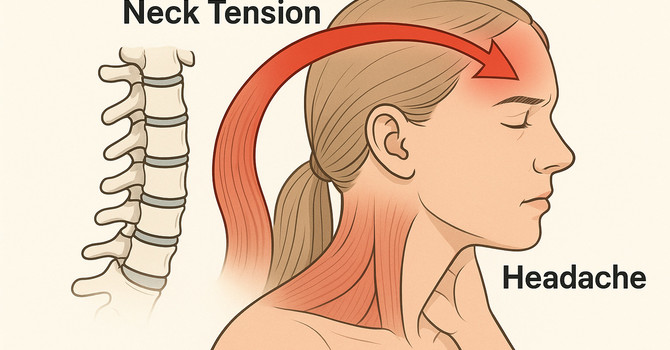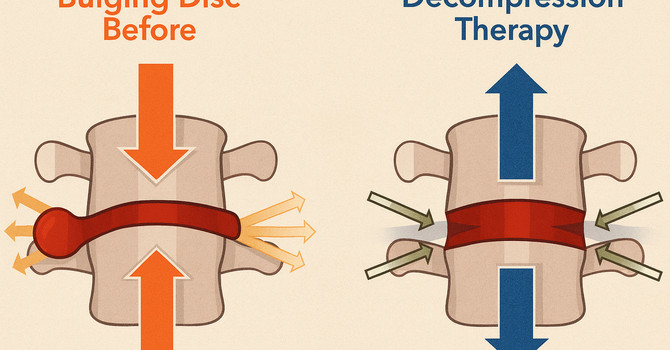
Back pain is an issue that plagues many people, not just during activities but even when we lie down to rest. You might expect lying down to relieve back pain, but for some, it’s quite the opposite. This blog I will explain why lying down can sometimes cause or worsen back pain, with a focus on spinal instability, and how chiropractic care and decompression therapy can help. We’ll also provide three exercises to help prevent this type of pain, based on research by Stuart McGill, PhD.
What is Spinal Instability?
The root cause of back pain when lying down often comes from a condition called spinal instability. The spine is designed to be strong and flexible, but when its support structures—muscles, ligaments, and discs—become weakened or injured, the spine can become unstable. When we’re standing or sitting, our muscles contract, providing the stability that keeps our vertebrae in proper alignment. This muscle contraction gives your spine the support it needs to stay stable and function correctly.
However, when we lie down, especially after a long day, our muscles begin to relax. This relaxation allows micro-movements of the vertebrae. These small movements can cause shearing forces within the spine, particularly at the joints between the vertebrae. These shifts in the spinal joints are often the culprits behind the sharp or dull pain people feel when lying down. This pain stems from the vertebrae moving into positions they’re not supposed to, which can irritate the surrounding muscles, ligaments, and discs.
The Role of Chiropractic Adjustments
Chiropractic care plays a vital role in addressing spinal instability. When the vertebrae become misaligned or stuck in a sheared, painful position due to instability, chiropractic adjustments can help restore proper motion. A chiropractor performs a gentle, controlled adjustment to the misaligned vertebra, which helps guide it back into its natural position. This realignment not only alleviates pain but also prevents further damage to the surrounding tissues.
By addressing these micro-movements through regular chiropractic adjustments, patients can experience significant relief. The adjustments ensure that your spine is properly aligned, which helps prevent future instability and reduces the likelihood of chronic pain.
Spinal Instability and Disc Stress
Another critical factor to consider is the impact of spinal instability on the discs. When vertebrae shift into a sheared position, it places tensile stress on the spinal discs. This pressure can cause discomfort, inflammation, or even injury. Over time, repeated stress on the discs may lead to degenerative changes, such as disc herniation or bulging, which can cause significant pain and discomfort.
Chiropractic adjustments and decompression therapy are effective in treating disc-related pain caused by spinal instability. Decompression therapy works by gently stretching the spine, which allows the contents of the disc to realign, relieving the pressure and promoting healing. This process restores the disc’s natural shape, reduces pain, and improves mobility. By combining decompression therapy with chiropractic care, patients experience relief from both the immediate pain and the long-term effects of spinal instability.
Three Exercises to Prevent Back Pain
In addition to chiropractic adjustments and decompression therapy, certain exercises can help prevent spinal instability and reduce the risk of back pain when lying down. These exercises target the core muscles that provide support to the spine, helping to stabilize the vertebrae and prevent those painful micro-movements.
1. Plank
The plank is an isometric exercise that strengthens the muscles and ligaments supporting the spine. When you hold the plank position, your body relies on core stability to maintain a neutral spine, which prevents harmful movements. This exercise is beneficial because it doesn’t involve dynamic movements that could stress the spine further.
- How to perform: Lie face down, propping yourself up on your forearms and toes. Keep your body in a straight line from head to toe, tightening your core muscles. Hold the position for 30 seconds to 1 minute.
2. Side Plank
The side plank targets the oblique muscles, which are essential for providing lateral stability to the spine. Weak obliques can lead to spinal instability, so strengthening these muscles can significantly reduce back pain.
- How to perform: Lie on your side with your legs stacked on top of each other. Prop yourself up on one forearm, keeping your body in a straight line from head to toe. Hold for 30 seconds to 1 minute on each side.
3. McGill Crunch Up
Named after renowned spine expert Stuart McGill, PhD, the McGill crunch up is a core exercise designed to protect the spine while still strengthening the muscles. Unlike traditional crunches, which can place harmful stress on the discs, the McGill crunch allows you to maintain a neutral spine, minimizing the risk of disc injury.
- How to perform: Lie on your back with one knee bent and the other leg flat on the floor. Place your hands under your lower back to maintain its natural arch. Lift your head, shoulders, and chest slightly off the ground, holding for a few seconds before lowering back down.
Conclusion
If you’re experiencing back pain when lying down, you’re not alone, and spinal instability could be the cause. By understanding how micro-movements in the vertebrae can lead to pain, and how chiropractic care and decompression therapy can help alleviate that pain, you can take proactive steps to manage and prevent discomfort. Regular chiropractic adjustments and decompression therapy can realign the spine and relieve disc stress, while incorporating exercises like the plank, side plank, and McGill crunch can strengthen the muscles supporting your spine.
If you’re suffering from back pain, visit us at Woodroof Chiropractic & Acupuncture in Olathe to learn how we can help you restore stability and live pain-free.
Dr. Ike Woodroof
Contact Me


